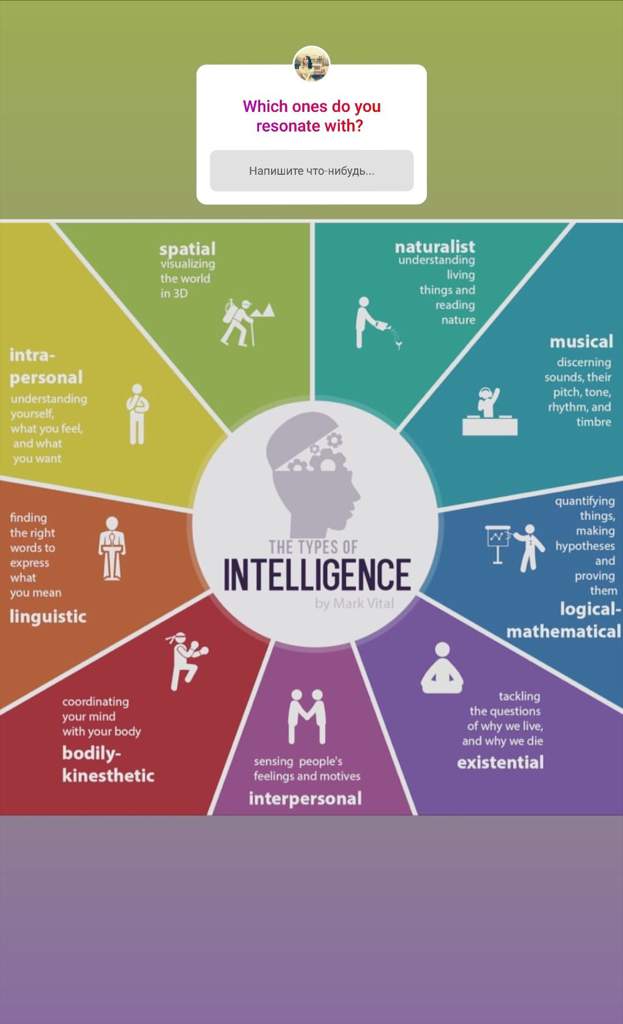Rarest personality disorder
What is the Rarest Personality Type?
Of all the 16 possible personality types, you might be curious to know which is least common and where your type ranks. Here’s everything you need to know about the rarest personality type, including traits, gender differences and other uncommon types.
Overall, the rarest personality type is INFJ
The rarest personality type is the INFJ personality type, known as ‘The Counselor’. INFJ is the rarest personality type across the population, occurring in just 2% of the population.
It is also the rarest personality type among men.
INFJ stands for Introversion, Intuition, Feeling, and Judging. This unique combination is hard to find in most people.
The INFJ personality type is characterized by their deep sense of integrity and their natural intuition. INFJs are skilled at interpreting the emotions and motivations of others and they work hard to help the people around them. This personality type tends to be idealistic and seeks out deep, meaningful connections with people.
They can often come across as quiet and gentle.
However, the situation is not clear cut
While INFJs are generally understood to be the rarest personality type, there are some other factors to bear in mind. Personality types can vary geographically with some personality types occurring more frequently and more rarely depending on the country, region or environment.
There are also some differences between the rarest personality type for men and women.
The rarest personality type for men
Like the general population, the rarest personality type among men is INFJ. Among men, INFJs make up just 1% compared to 2% of the general population.
There are some questions about why this might be. The INFJ type includes some personality traits that Western society typically views as feminine traits such as high levels of emotional intelligence and empathy. INFJs are known to be sensitive and quiet, often spending time listening to the concerns of others rather than sharing their own thoughts.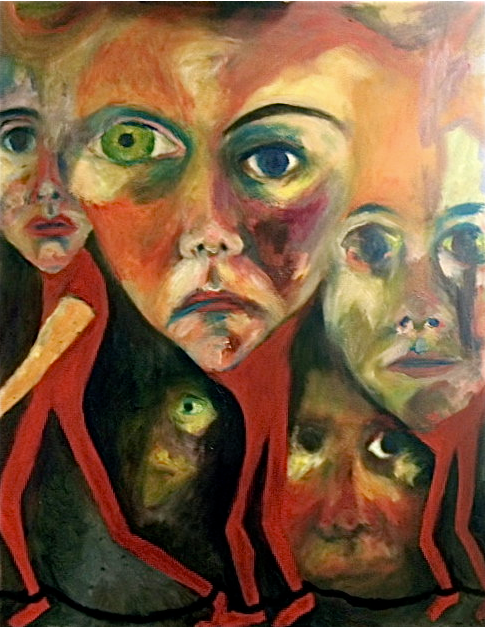
It’s possible that boys are raised in a way that encourages them to subdue these aspects of their personality. Maybe they are making choices or exhibiting behaviors that give them a different type on a personality test. We don’t really know why, but the data shows that INFJ is the rarest personality type for men.
The rarest personality type for women
For women, however, the rarest personality type is INTJ and ENTJ. Just 1% of women type as INTJ and ENTJ respectively.
Among women, INFJ is only the third rarest personality type with approximately 2% of women categorized as INFJ.
Both INTJ women and ENTJ women are extremely rare in the general population. It is not clear why this would be. However, the INTJ and ENTJ personality types are associated with being strategic, assertive and analytical. They tend to be less capable at reading their own emotions and the emotions of others. These traits are not typical of women in general, and it could be that – as with INFJ men – INTJ/ ENTJ women are changing their reported behaviors or honing their weaker skills to fit in.
The top 5 rarest personality types ranked
Curious to know the other rarest personality types? INFJ isn’t the only personality type that’s hard to find! There’s actually a large group of personality types that are pretty uncommon in the general population.
Read on to find out the top 5 rarest personality types, ranked from rarest to most common.
1. INFJ
The INFJ personality type is the undisputed top 1 rarest personality type in the general population coming in at just 2%. INFJs are especially rare among men with only 1% of men qualifying as this personality type. It is slightly more common in women at around 2%.
2. INTJ
Known as ‘The Mastermind, INTJ is the next rarest personality type in the general population and the rarest personality type among women. INTJs make up just 2% of the general population and account for 3% of men and just 1% of women.
3. ENTJ
Sharing the top spot for the rarest personality type among women, ENTJ is also one of the rarest personality types in the general population.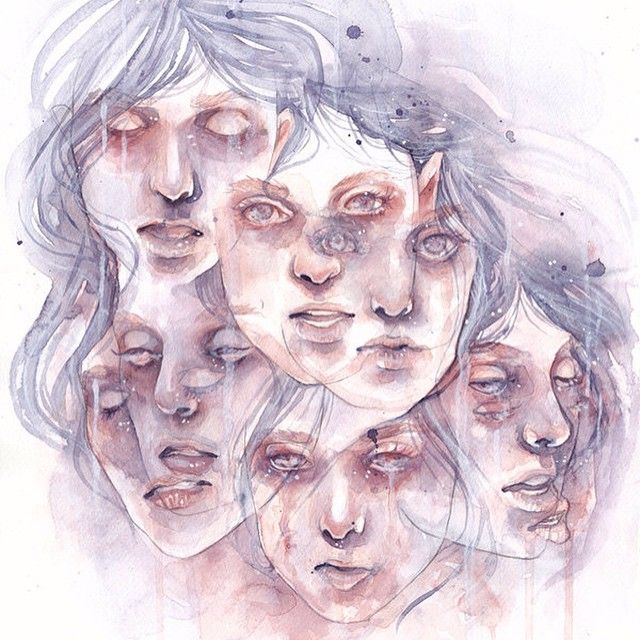 Like the closely related INTJ, ENTJs come in at just 2% of the general population, 3% of men and 1% of women.
Like the closely related INTJ, ENTJs come in at just 2% of the general population, 3% of men and 1% of women.
4. ENFJ
Another of the rarest personality types is ENFJ which can be found in just 3% of the general population. ENFJ is the second rarest personality type among men, occurring in just 2% of men. For women, the rate is a little higher at 3%.
5. ENTP
ENTP snags the 5th spot for the top 5 rarest personality types. This personality type can be found in 3% of the general population. It is slightly more common in men, with 4% of men categorized as ENTP. For women, the personality type is rarer at just 2%, making it one of the rarest personality types.
Understanding the rarest personality types
Looking at the top 5 rarest personality types, it is possible to pick out some patterns in their style of thinking and behaving. The rarest personality types tend to be Intuitives and Judgers, rather than Sensors and Perceivers.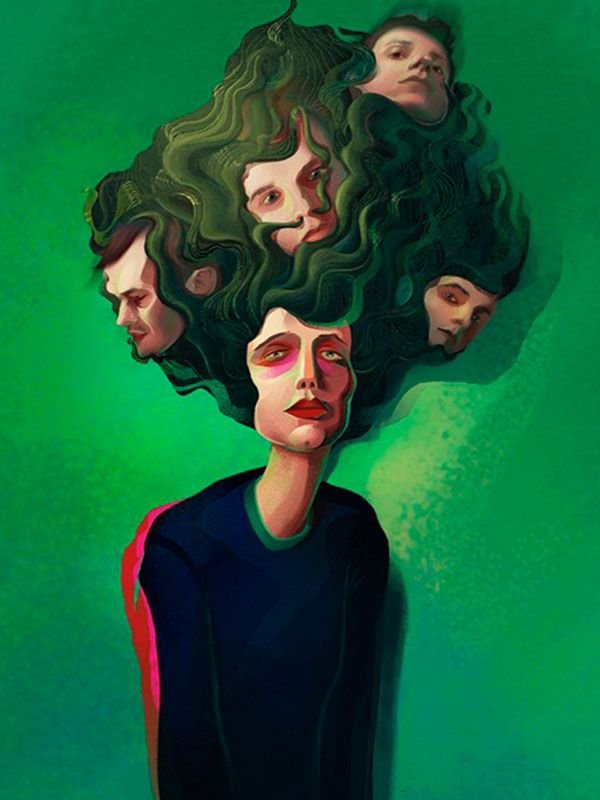
So what does that mean?
Intuition
All the rarest personality types have one thing in common: they are Intuitives rather than Sensors. This is interesting because Intuitives tend to be more abstract in their way of thinking and processing information. They like to look for patterns and theories and are generally more concerned with the future than the present.
The more common personality types tend to be Sensors. Sensors process information differently than Intuitives, preferring to focus on what they can see, hear and feel. They are often described as more practical and they look to understand the world in a more hands-on way.
Judging
There is also a high prevalence of Judging rather than Perceiving types among the top 5 rarest personality types. The Judging/Perceiving dimension of the 16 type system describes how people prefer to structure their lives. Judgers tend to look for order and structure and will prioritize planning over spontaneity.
It is more common to find people who fit into the Perceiving personality type in the general population.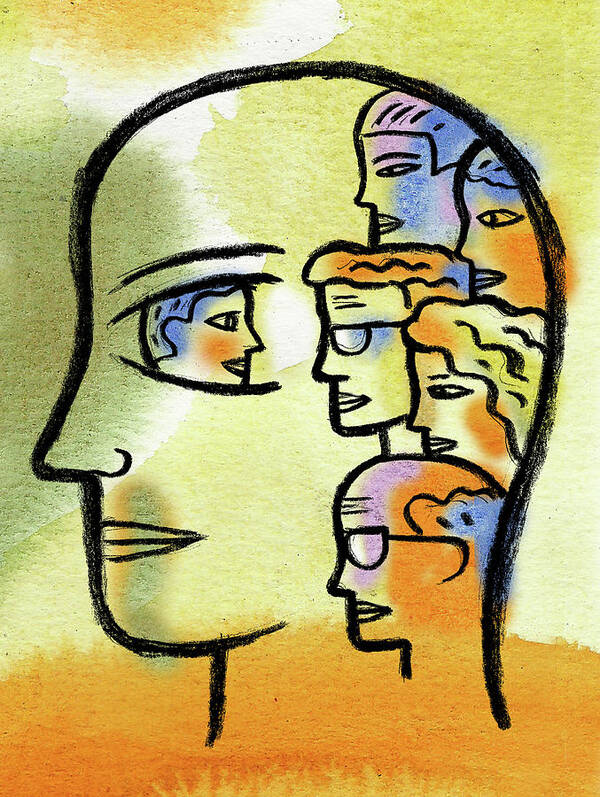 Unlike Judgers, Perceivers prefer things a little less predictable. They value flexibility and prefer to adapt rather than plan.
Unlike Judgers, Perceivers prefer things a little less predictable. They value flexibility and prefer to adapt rather than plan.
How does your type compare?
While INFJ is the rarest personality type, that doesn’t make it any better or worse than the other personality types. Each personality type has its own strengths and weaknesses, whether it is more common or harder to find in the general population.
To find out more about the 16 type system, read this next or take the test to find out your personality type!
Rarest Personality Type in the World: INFJ Personality
You’ve most likely had to take a Myers-Briggs Type Indicator test at some point in your life. If you haven’t, here’s a quick summary: The test measures which side you lean more towards in four different areas: Extroversion vs. Introversion, Sensing vs. Intuition, Thinking vs. Feeling, and Judging vs. Perceiving. The Myers-Briggs personality types combine the letters of those traits to create a four-letter sequence, like ENTJ or INTP. (There’s an “N” in some of these Myers-Briggs personality types to represent “Intuition,” because the “I” is already taken by “Introversion.”)
(There’s an “N” in some of these Myers-Briggs personality types to represent “Intuition,” because the “I” is already taken by “Introversion.”)
agsandrew/Shutterstock
After you take the test, don’t be surprised if you’re oddly freaked out by how accurate your results are. If you happened to fall into the INFJ personality type, you’re a rare breed; only 1.5 percent of the general population fits into that category, making it the rarest personality type in the world. When it comes to physical attributes, this is the rarest hair and eye color combination in humans.
What does this type mean about you? What are some INFJ personality traits? According to the Myers-Briggs Type Indicator test, the INFJ personality is more introverted, intuitive, feeling, and judging. In other words, INFJs are a bit more reserved, but they’re very loyal friends and make strong, empathetic leaders. The rarest personality type is often referred to as the “Counselor” type because of the INFJ personality traits. INFJs are very moral and persistent, and they usually see the glass half full. They prefer to be open with only a select few people and are very good listeners themselves. Their introversion can cause them to be difficult to get to know, as well as reserved with people they don’t know well. If you have any of the Myers-Briggs personality types that start with I, you’ll definitely relate to these funny cartoons for introverts.
INFJs are very moral and persistent, and they usually see the glass half full. They prefer to be open with only a select few people and are very good listeners themselves. Their introversion can cause them to be difficult to get to know, as well as reserved with people they don’t know well. If you have any of the Myers-Briggs personality types that start with I, you’ll definitely relate to these funny cartoons for introverts.
Everett Collection/Shutterstock
Who are some INFJ famous people? Well, former First Lady Eleanor Roosevelt had the rarest personality type, as does former president Jimmy Carter. Lawyer and activist Mohandas Gandhi was also an INFJ. On the more artistic side of INFJ famous people, you’ll find Wuthering Heights author Emily Brontë, Crime and Punishment author Fyodor Dostoyevsky, and Oscar-winning actress Shirley MacLaine.
On the other end of the scale, the most popular personality type is ISFJ. If you’re curious about which of the Myers-Briggs personality types best describes you, take the Myers-Briggs Type Indicator test for yourself. Could you have an INFJ personality? No matter what your Myers-Briggs personality type ends up being, we’ve got an explanation for what it means right here.
If you’re curious about which of the Myers-Briggs personality types best describes you, take the Myers-Briggs Type Indicator test for yourself. Could you have an INFJ personality? No matter what your Myers-Briggs personality type ends up being, we’ve got an explanation for what it means right here.
Morgan Cutolo
Morgan is the Senior Production Editor at Trusted Media Brands. She graduated from the University of New Hampshire in 2016 where she received her Bachelor of Arts in Journalism. She works with our Production Coordinators to keep content moving and make sure that things are working well behind the scenes for all our digital sites. In her free time, she likes exploring the seacoast of Maine where she lives and works remotely full time and snuggling up on the couch with her corgi, Eggo, to watch HGTV or The Office.
90,000 Top 15 Rare Mental Disorders | Vestnik Kavkaza Nowadays, mental disorders are not uncommon. The disease does not always have bright clinical manifestations.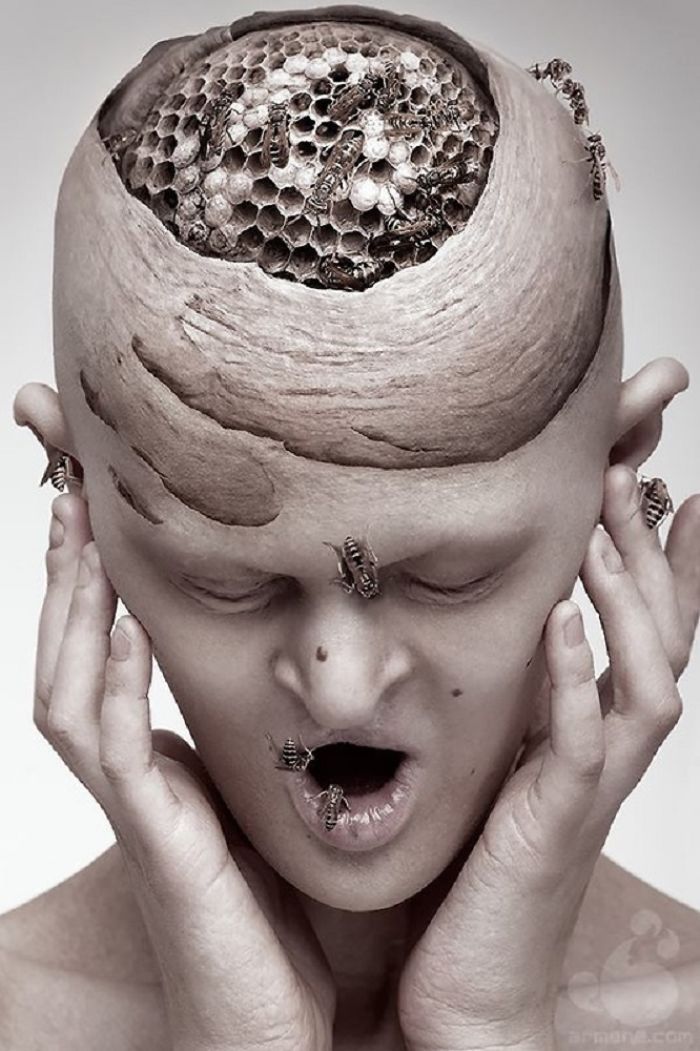 But if neuroses, psychoses and panic attacks are quite well-known to a wide range, then there are diseases that few people know about. The Feldsher.ru website lists the top 15 rare mental disorders.
But if neuroses, psychoses and panic attacks are quite well-known to a wide range, then there are diseases that few people know about. The Feldsher.ru website lists the top 15 rare mental disorders.
1. Fatal familial insomnia
A rare incurable hereditary disease in which the patient inevitably dies from insomnia. Only 40 families are known to be affected by this disease. The disease begins at the age of 30 to 60 years, lasts from 7 to 36 months, after which the patient dies. This pathology is shown in the film "Insomnia" (2018), in which a theater troupe arrives to rehearse a play in a mental hospital and stops sleeping.
2. Embodied presence syndrome
Have you ever had the feeling that someone is looking at you? And also this discomfort, as if someone is standing behind your back? Karl Jaspers was the first to describe such a state and called it "the Anwesenheit phenomenon". Here is an example he gives: the patient always felt that someone was standing behind him, following him, a little behind and away from him.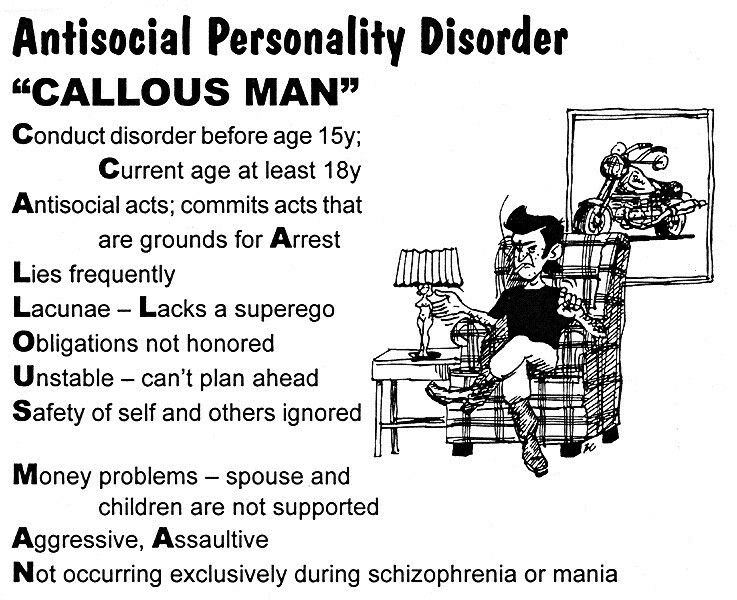 When the patient stopped, "someone" also stopped. When trying to turn around and see "him", this "someone" slipped out of sight. Being a man, apparently reasonable, the patient concluded in the end that there was no one behind him, despite the intensity of his experiences.
When the patient stopped, "someone" also stopped. When trying to turn around and see "him", this "someone" slipped out of sight. Being a man, apparently reasonable, the patient concluded in the end that there was no one behind him, despite the intensity of his experiences.
This pathology occurs in patients with schizophrenia, with temporal lobe epilepsy, reactive states after severe loss, intoxication, sleep deprivation, in mentally healthy individuals exposed to prolonged stress, as well as in therapy with ergot alkaloids. "Echoes" of the presence syndrome can also be found in fiction, for example, in "The Canterville Ghost" by Oscar Wilde.
3. Dermatozoic delirium (Ekbom's syndrome)
The disorder occurs in 30% of patients in dermatological hospitals. People suffering from dermatozoic delusions are convinced that their entire body is teeming with living organisms, insects and various creatures. Patients give a detailed account of their "disease", demonstrating areas of "affected" skin.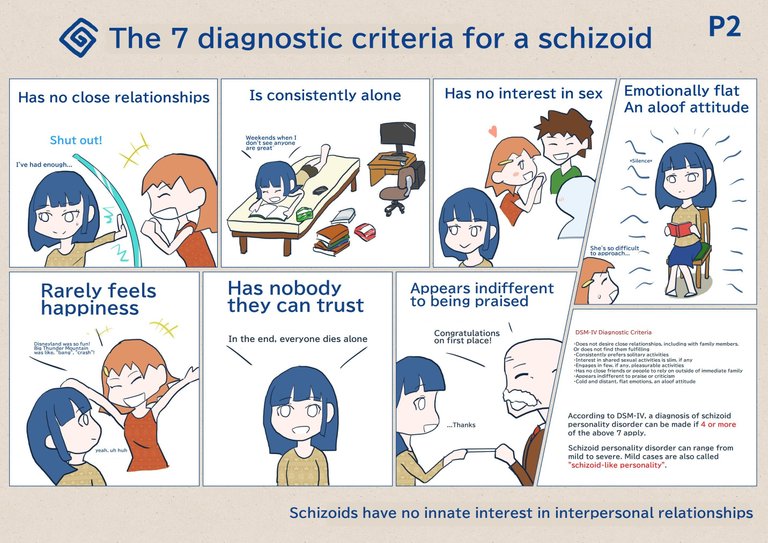
Please do not confuse delusions with Willis-Ekbom syndrome ("restless legs syndrome"). Although people who suffer from restless legs syndrome sometimes describe one of its symptoms in the style of "ants under the skin" - these are two different diseases, one of which is caused by real physiological causes, while the other is a delusional condition. Ekbom's syndrome is featured in the comedy horror film Slug. An entire branch of horror culture dedicated to the alien "other" seems to be inspired by this disorder.
4. Alice in Wonderland Syndrome
In the Russian psychiatric literature, a disorder in the perception of one's own body is called "body schema disorder" or "autometamorphopsia". The syndrome is characterized by impaired perception of one's body, which may seem very small to the patient or, conversely, gigantic, and sometimes disproportionate. For example, the torso reaches 100 meters, the legs extend to the center of the Earth, and the head becomes the size of an apple.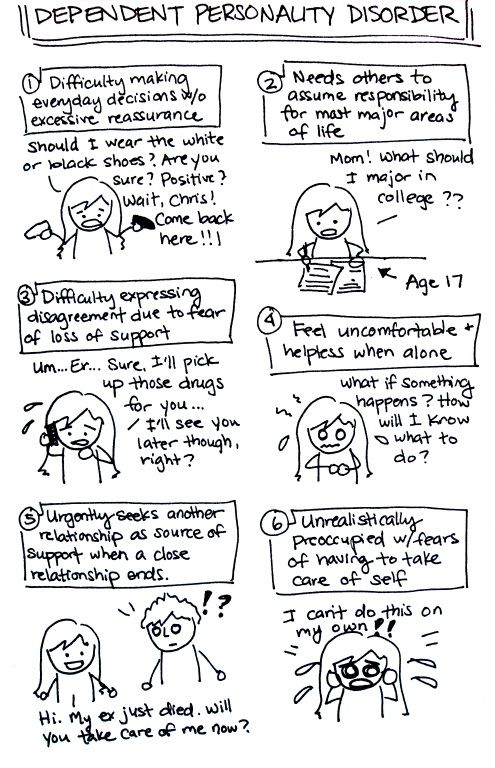 It is possible to correct the altered body scheme by sight: looking at oneself in the mirror, the patient discovers the normal parameters of his head (although he feels it, for example, 10 meters).
It is possible to correct the altered body scheme by sight: looking at oneself in the mirror, the patient discovers the normal parameters of his head (although he feels it, for example, 10 meters).
5. Erotomania
At some point in our lives, we imagine that the people we are in love with also love us. People with erotomania take this to the extreme. They believe that the person they love, usually a celebrity or someone famous, also loves them and sends them messages through smiles, glances, signals, or even telepathy. Then these erotomaniacs try to express their love for the person they are interested in with letters, unexpected visits - in general, they try in every possible way to get closer to the object of passion, becoming overly intrusive, and sometimes even resorting to violence. These people also tend to express their love by doing something they think will make the celebrity take notice of them, fall in love with them.
John Hinckley Jr.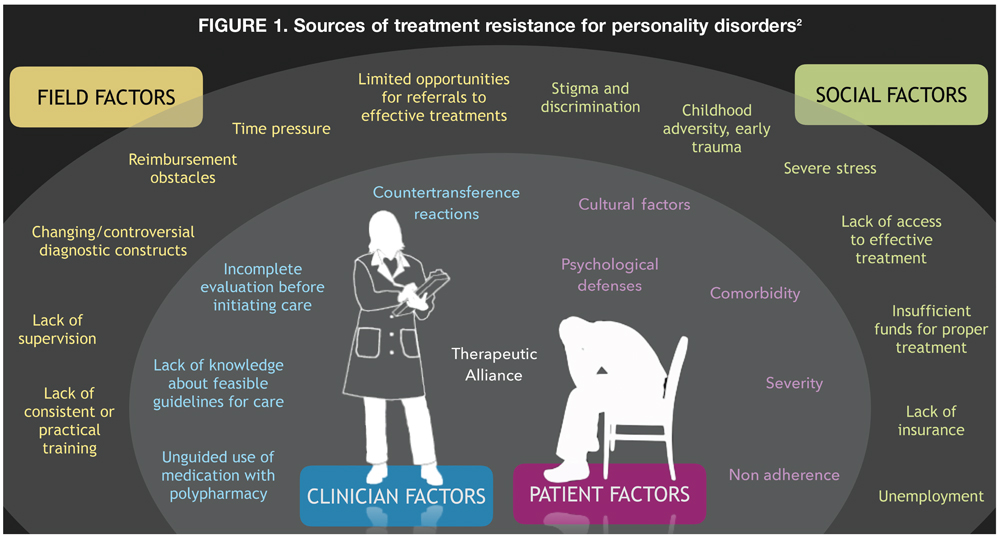 "fell in love" with Jodie Foster after watching the movie Taxi Driver with Robert De Niro. And since the plot of the film revolved around the assassination of the President of the United States, Hinckley tried to do it. He shot Reagan and sent love letters to Jody. Since then, he has been in a psychiatric hospital.
"fell in love" with Jodie Foster after watching the movie Taxi Driver with Robert De Niro. And since the plot of the film revolved around the assassination of the President of the United States, Hinckley tried to do it. He shot Reagan and sent love letters to Jody. Since then, he has been in a psychiatric hospital.
6. Alien hand syndrome
This is a complex neuropsychiatric disorder, a form of apraxia, in which one or both hands act on their own, regardless of the owner's desire. Often, the disease is diagnosed in people who have undergone surgery that affects the brain, who have traumatic brain injuries or brain tumors.
Many patients report a threat to their lives, a limb can choke them in their sleep, grab wires and hot objects. Some doctors believe that this is how the patient's subconscious fears or desires come true. That is, if the patient wants to drink or eat, but at the moment cannot perform the act of eating, the diseased hand can snatch food from other people or from the store counter.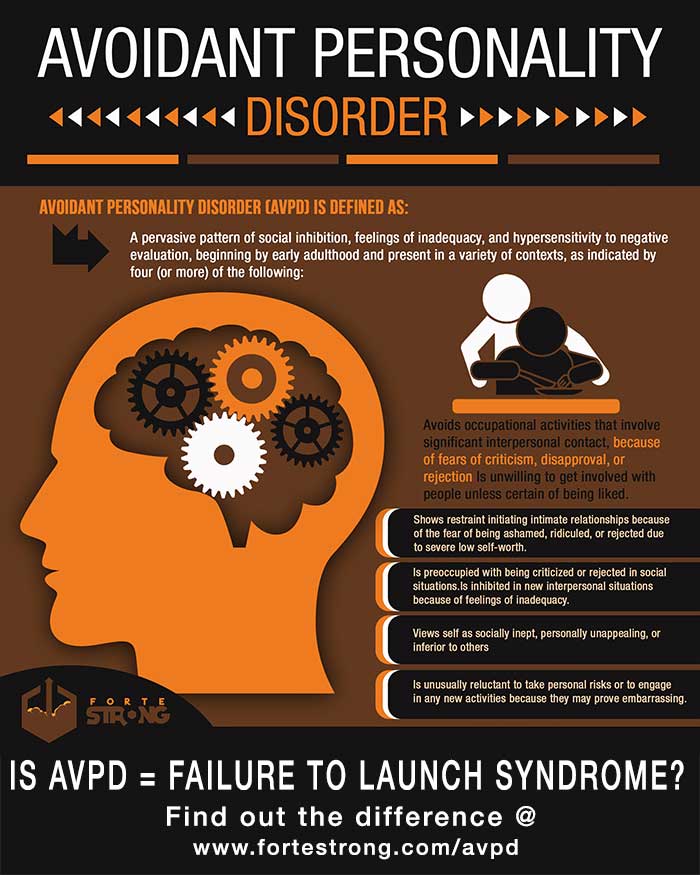
7. Foreign accent syndrome
A rare disease, usually the result of a serious head injury or stroke. A person suffering from such a disease intones words like a foreigner, pronounces sounds that are not characteristic of his native language. Only 15 such cases are known, one of which occurred in Norway in 1941, when a young woman was wounded in the head by a shrapnel during a bombing. After recovering from her injury, she spoke with a strong German accent, which discouraged her fellow Norwegians.
8. Boanthropy
The disorder usually begins as a kind of dream, and then captures the person's thoughts entirely, eventually turning into mania. A person begins to consider himself a cow or a bull. Such people can be found on all fours in the field while chewing grass. Nebuchadnezzar probably suffered from this because "he was cast out of society and ate grass like an ox." He is credited with the conquest of Judea and Jerusalem, the expulsion of the Jews, and the creation of the Hanging Gardens of Babylon.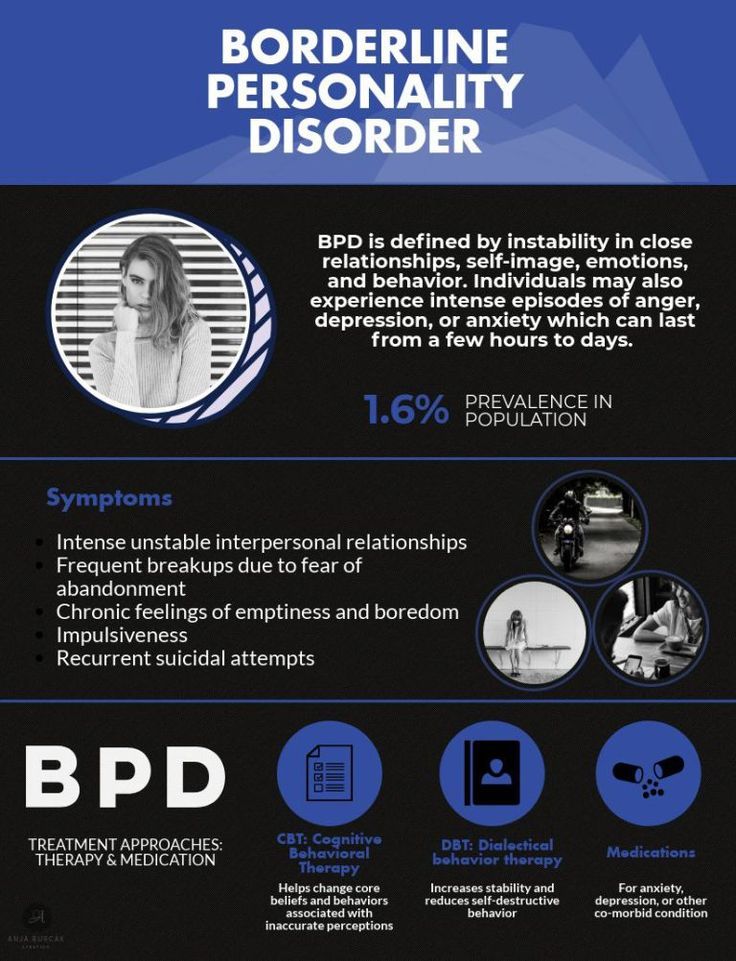 God wanted to put him in his place, so he lost his mind and lived like an animal for seven years before he was forgiven.
God wanted to put him in his place, so he lost his mind and lived like an animal for seven years before he was forgiven.
9. Kleine-Levin syndrome
Kleine-Levin syndrome (or Sleeping Beauty syndrome) is manifested by severe attacks of drowsiness, followed by a sharp feeling of hunger and nervous disorders. Some scientists suggest that the disease is provoked by malfunctions in the hormonal system, while others are sure of its genetic nature, since the disease is often inherited. In addition to these two versions, acute lesions of the hypothalamus that have not yet been fully studied can become the cause of the development of Kleine-Levin syndrome.
Mari, the 19-year-old heroine of Haruki Murakami's novel "Afterdarkness," tells her interlocutor about her sister, Eri, who sleeps all the time, waking up only to eat. It turns out that writers often describe rare diseases in order to give expression to one or another of their ideas.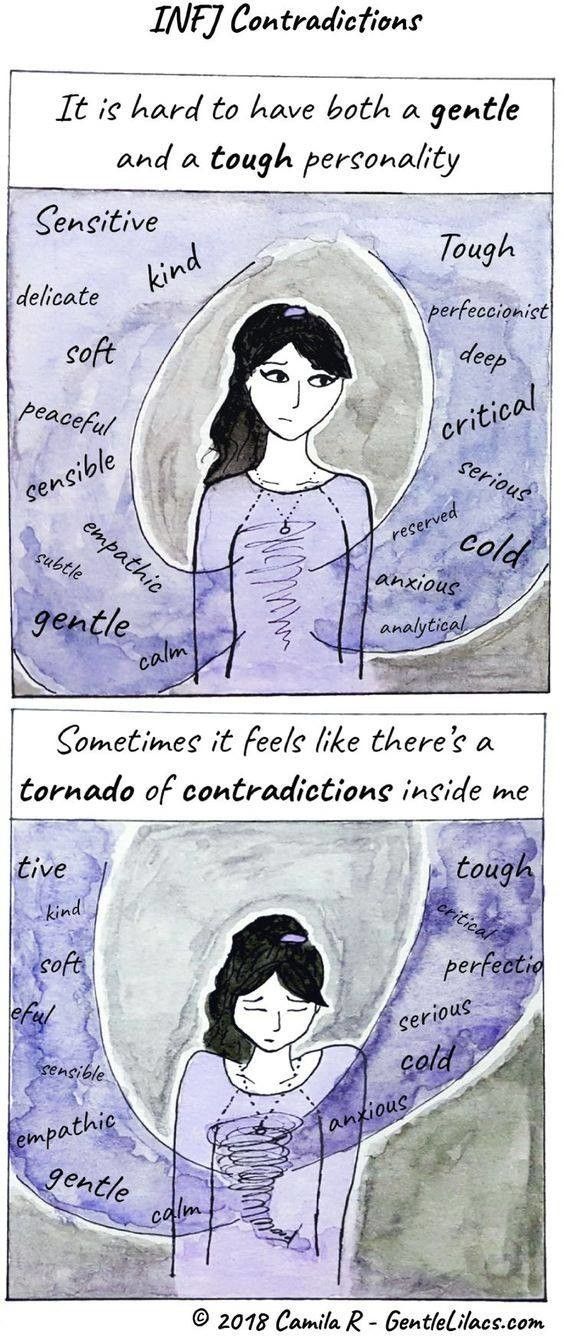
10. Lim's Syndrome
Lim's Syndrome manifests itself in moments of hostage-taking by terrorists and is expressed in the appearance of sympathy for the captured people by the rapists during the process of communication between both parties. As a result, the invaders are so imbued with sympathy that they let people go. Against the background of Lim's syndrome, the opposite syndrome is often observed - Stockholm.
11. Capgras syndrome
This is a false recognition by a mentally ill person of unknown persons who are mistaken for acquaintances, relatives or, conversely, acquaintances are mistaken for strangers who take on the appearance of acquaintances. Includes delusions of the positive twin, delusions of the negative twin, Fregoli's syndrome, and delusions of intermetamorphosis. The syndrome appears as a disruption in the connection between two key areas of the brain - the fusiform gyrus (face recognition) and the cerebellar amygdala, which is responsible for the emotional response to faces.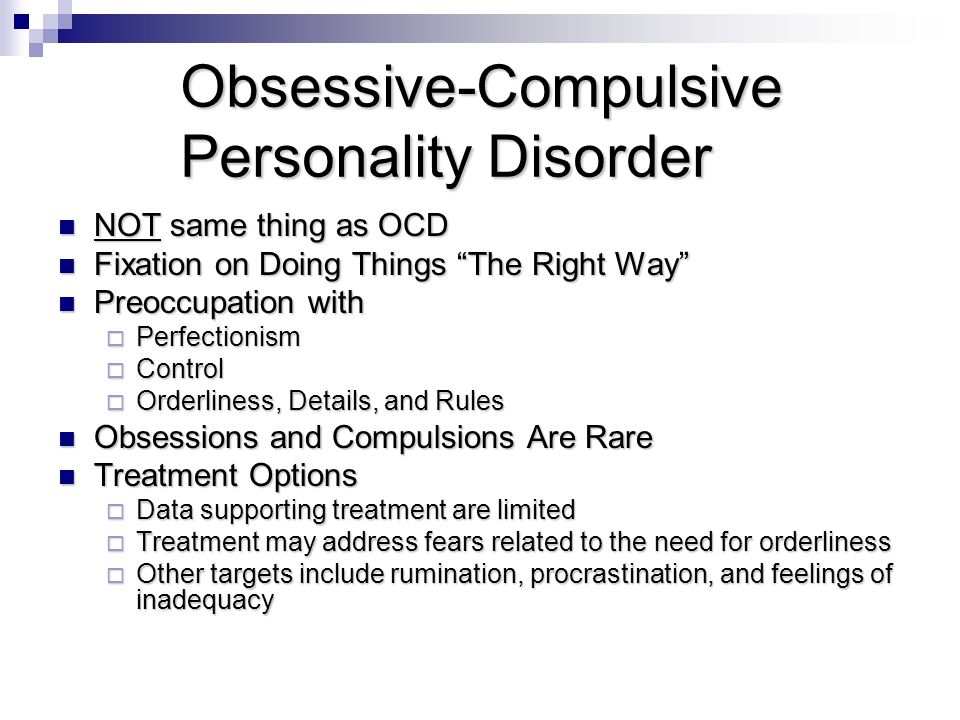 Normally, these two areas, interacting with each other, give, for example, the following picture of the world: "This is my husband and I love him." In patients with Capgras syndrome, according to the researcher, face recognition does not entail an appropriate emotional response: "This person looks like my husband, but this is not my husband - the face does not evoke in me the feelings that I had before. It must be replaced with a double.
Normally, these two areas, interacting with each other, give, for example, the following picture of the world: "This is my husband and I love him." In patients with Capgras syndrome, according to the researcher, face recognition does not entail an appropriate emotional response: "This person looks like my husband, but this is not my husband - the face does not evoke in me the feelings that I had before. It must be replaced with a double.
12. Dysmorphophobia
A mental disorder in which a person is overly concerned about a defect or feature of his body. "Quasimodo Syndrome" usually begins in adolescence or adolescence. The frequency of occurrence among men and women is approximately the same, accompanied by a high risk of suicide compared with other mental disorders. Patients may complain of several or one "defect". They constantly look in the mirror, trying to find an angle in which the alleged defect is not visible; refuse to be photographed, so as not to capture their flaw in the picture; excessive grooming
13. Familial dysautonomia
Familial dysautonomia
The disease is called Rye-Daley syndrome and refers to genetic pathologies. Most often found among Ashkenazi Jews of the Eastern European group. Symptoms include frequent vomiting, difficulty swallowing, an abnormally thick upper lip, and a protruding jaw. In addition, sensitivity is impaired in a person, and although this is not easy to notice in a very young child, it is worth remembering: children with such a disease do not feel pain, burns, cold, which means they do not notice a dangerous situation and can be seriously injured.
14. Lesch-Nychen Syndrome
There are tribes in the world who consider the flesh of their enemies, neighboring tribes, to be really tasty. And then there are the sick and serial killers with a taste for human flesh. What if you meet someone eating their own flesh? Such a person suffers from Lesch-Nyhan syndrome, or self-cannibalism.
It mostly starts as juvenile gout, when large amounts of uric acid begin to build up in the joints. This leads to severe kidney problems, and neurological signs include poor muscle control and a degree of intellectual disability. Then comes the self-deprecating behavior. There are many documented cases of this disease. In 2009A 25-year-old convicted murderer on death row named Andre Thomas pulled out and ate his own eye.
This leads to severe kidney problems, and neurological signs include poor muscle control and a degree of intellectual disability. Then comes the self-deprecating behavior. There are many documented cases of this disease. In 2009A 25-year-old convicted murderer on death row named Andre Thomas pulled out and ate his own eye.
15. Synesthesia syndrome
Not a very rare pathology, but after the previous horror, I want to end the publication with something good. Synesthesia refers to the unusual perception of sounds, colors, or smells that most people experience. People with such a deviation literally see color in response to music or human speech, the most common variant of it can be considered the feeling of the days of the week in the color scheme.
The prevalence of synesthesia is about 4.4% of cases, and it is more often observed in creative or creative people. Composer Scriabin, for example, had "color hearing": he could distinguish colors in the notes of a musical scale.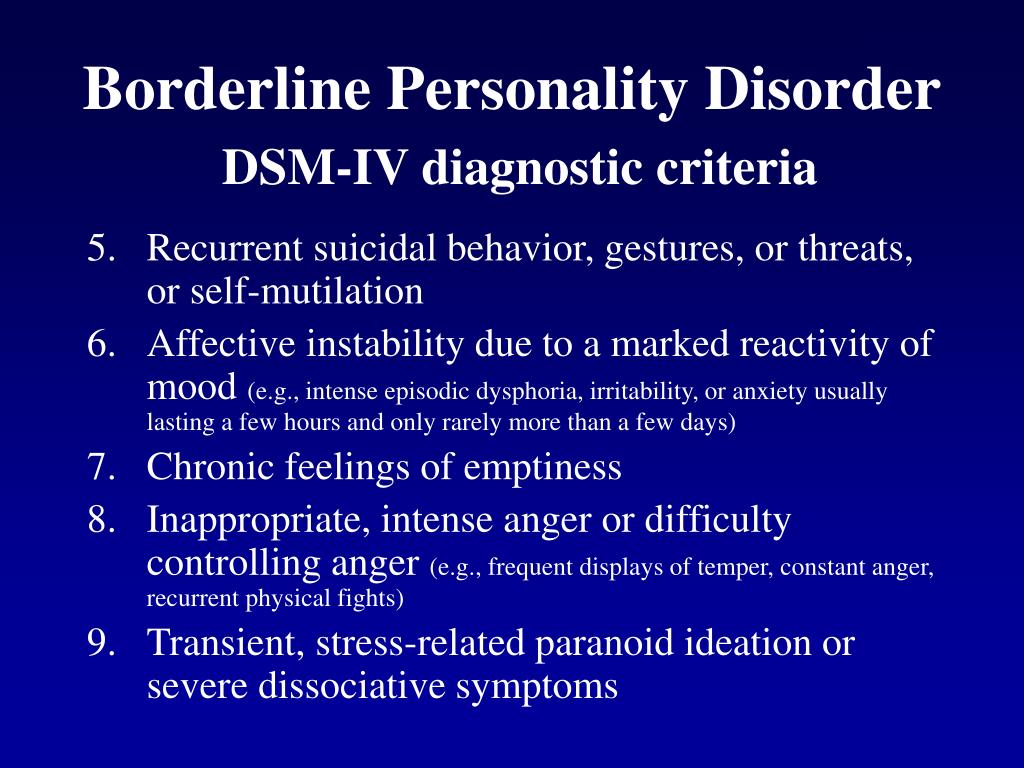 Lady Gaga also considers herself a synesthete, including the Ratatouille rat, who could see the colors of the food she ate.
Lady Gaga also considers herself a synesthete, including the Ratatouille rat, who could see the colors of the food she ate.
Top 10 rare mental disorders - Knife
Do you know almost everything about bipolar disorder and depression and define hypomania in three notes? It's time to study rare symptoms! We talk about the emergence of worlds, the Alice in Wonderland syndrome, delusional hermaphroditism and other amazing mental states.
ShareRepostTweet
The emergence of worlds
The emergence of worlds from non-objective feelings is characteristic of the early stages of schizophrenia, occurs during poisoning (for example, with opium), and is often recorded at the moment before an epileptic seizure. During schizophrenic personality transformation, patients “lose contact” with things, feel “distant” and alien: “What is there in the world? I don't belong to him anymore."
At the same time, people experience a feeling of crystal clearness - but it is empty, so that they do not manage to share their "discovery" with others.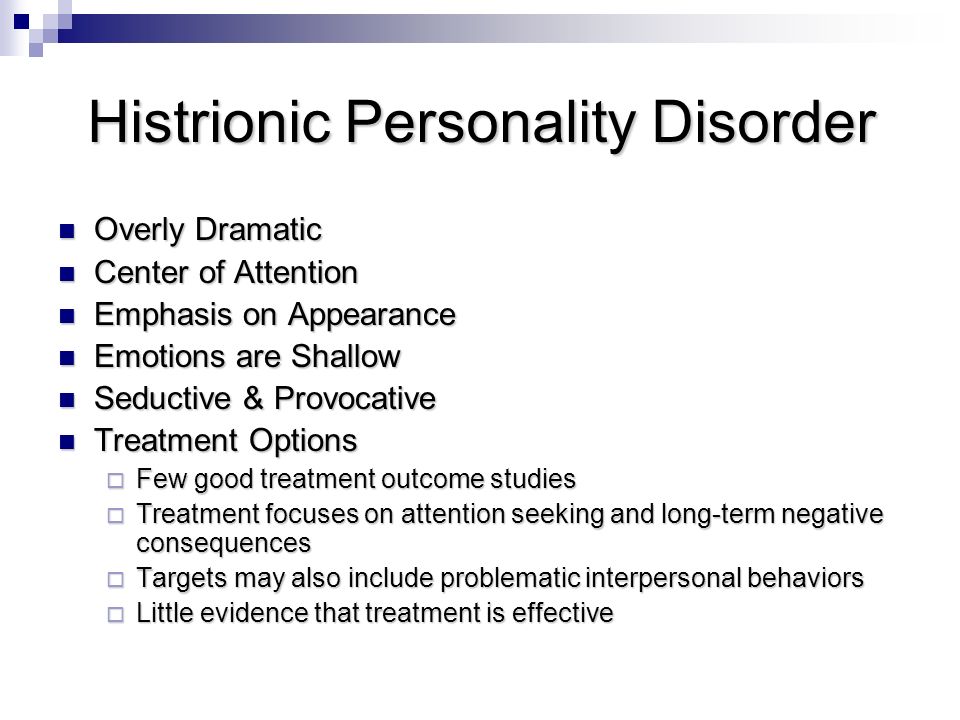
A person believes that he has comprehended the deepest of meanings: timelessness, peace, God, death. But when this state passes, he can no longer reproduce or describe his experiences - after all, he had a delusion of feelings.
The number of people diagnosed with schizophrenia worldwide exceeds 21 million.
Here is how the patients themselves describe their feelings:
—It dawned on me — I know everything, in these sublime hours the secrets of the world were revealed to me.
—It seemed to me that I saw everything so clearly and clearly, as if a new and unusual understanding of things dawned on me.
—I see something infinitely great that makes me tremble. I have personally experienced God, this is the culmination of my life.
World Origin Syndrome can be seen in the movie Dragonfly (2002). After the tragic death of the hero's wife, mysterious signs and frightening messages begin to haunt him, he feels that he knows something that other people do not guess, and blindly believes his feelings.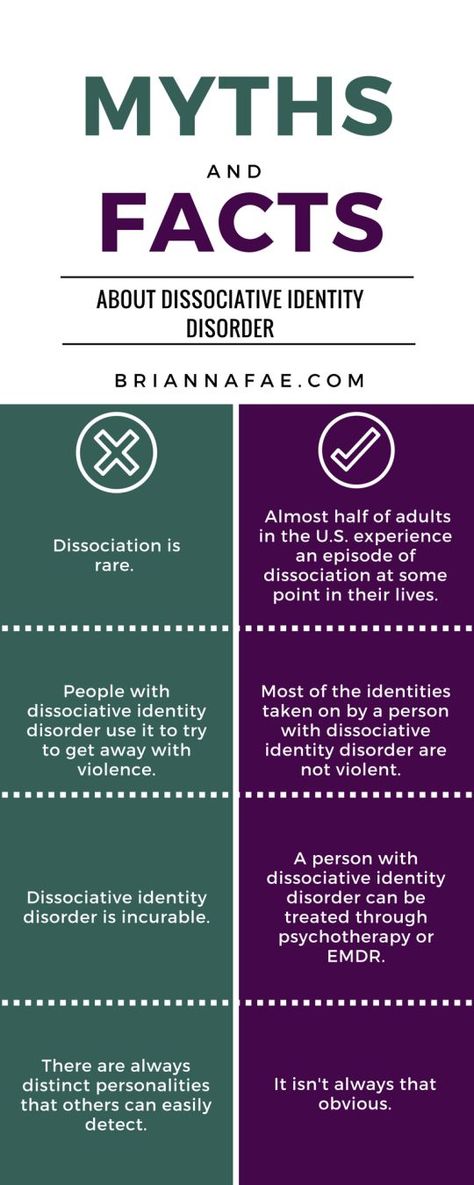
Fatal familial insomnia
Fatal familial insomnia is a dangerous fatal disorder. It occurs after 30 years, more often closer to 50.
The patient cannot sleep. At first, he falls into short-term nightmares, after which he comes to himself even more broken. Then hallucinations are added to the nightly panic attacks. Insomnia is dangerous - it can provoke psychotic states, and if it does not stop within a year, then there is a risk of death.
There is no cure for this disease. Such insomnia is genetically transmitted, and about 40 families are known in the world with the corresponding genes. It is well shown in the film "Insomnia" (2018), in which the theater troupe comes to rehearse the play in a mental hospital and stops sleeping.
Syndrome of the sense of presence
Syndrome of the sense of presence (German: Anwesenheit) is also called the "deception of awareness" (according to A.V. Snezhnevsky).
This disorder is characterized by a sensation of the presence of a foreign being in the immediate vicinity of the patient.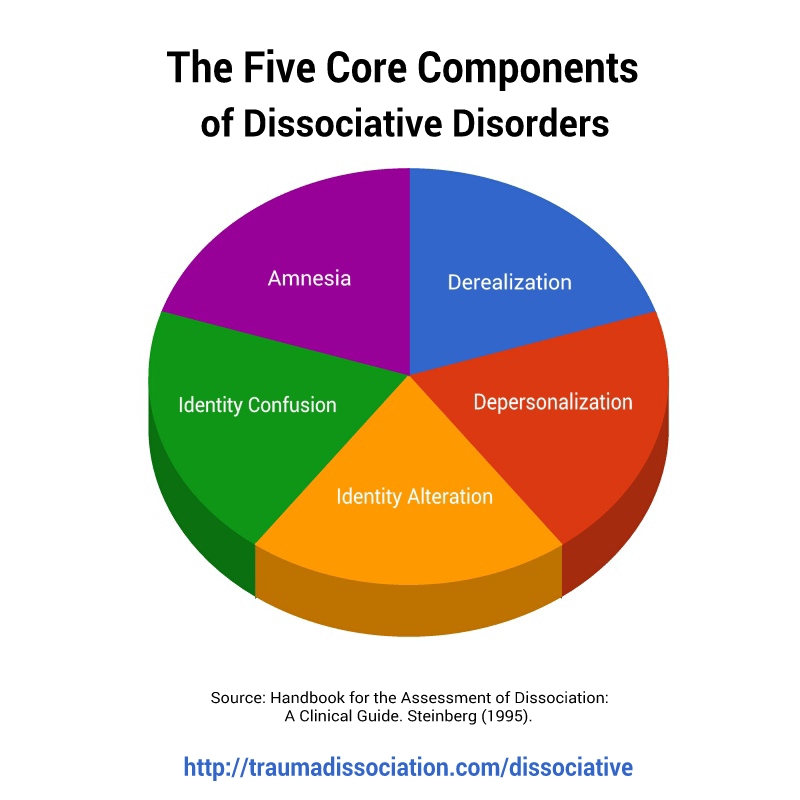 As a rule, such states occur with clear consciousness, when the patient is alone at home or in another room, less often in open space. He feels the presence of an unfamiliar person or creature that looks like a ghost, but he can neither be seen nor heard.
As a rule, such states occur with clear consciousness, when the patient is alone at home or in another room, less often in open space. He feels the presence of an unfamiliar person or creature that looks like a ghost, but he can neither be seen nor heard.
This syndrome is considered a rare disorder, although exact prevalence data are generally not available.
Anwesenheit occurs not only in patients with schizophrenia, but also in a number of other psychoses: temporal lobe epilepsy, reactive states after bereavement, intoxication, sleep deprivation, in mentally healthy individuals exposed to prolonged stress, as well as in therapy with ergot alkaloids (lizuride, pergolide).
"Echoes" of the presence syndrome can be found both in fiction, for example, in Oscar Wilde's "Canterville Ghost", and in cinema, in such films as "Ghost" (1990), "Ghosts" (2007), and in the film "The Others" (2001) with a twisted plot, the spirits themselves suffer from this disorder.
Intermetamorphosis syndrome
With intermetamorphosis syndrome, a person is sure that his mental essence and appearance have been changed.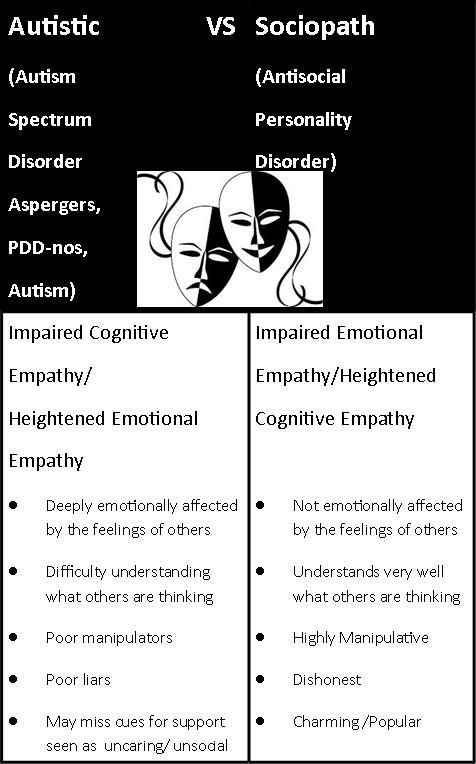 Some “third parties” can “force” the patient to a complete physical and moral transformation, and there is always a system of proofs of the transformation, and the disorder itself can last for years.
Some “third parties” can “force” the patient to a complete physical and moral transformation, and there is always a system of proofs of the transformation, and the disorder itself can last for years.
Intermetamorphosis syndrome in its typical manifestations is shown in the movie "Freaky Friday" and in all other films about the exchange of bodies.
There is a syndrome of delusional hermaphroditism related to intermetamorphosis , when a person believes that, for example, an ex-girlfriend lives inside him, who eats his food, drinks his juices and talks to him.
It does not seem to the patient that he himself has changed - physically or psychologically. It’s just that inside his bodily shell, besides him, there is another personality, a female. Delusional hermaphroditism is a popular theme in romantic comedies such as Love-Carrot (2007), where Gosha Kutsenko expressively portrays his inner woman, acting out a rich set of gender stereotypes.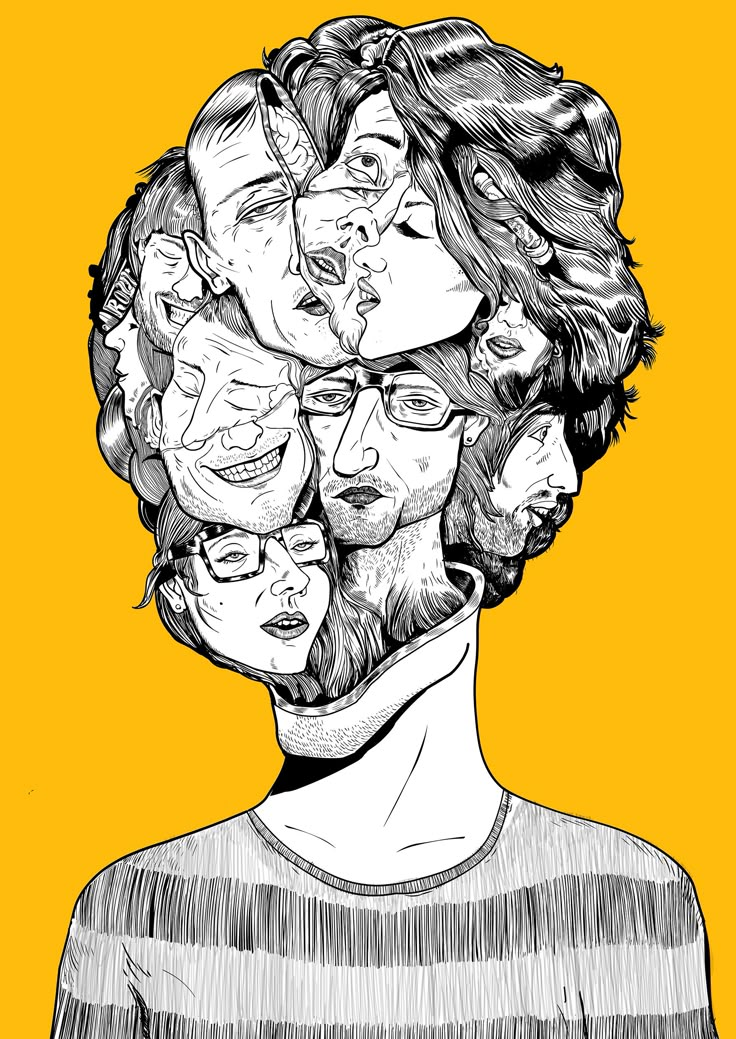
Delusional parasitosis syndrome
Ekbom's syndrome (also known as delusional parasitosis syndrome) is named after the Swedish neurologist who described it in 1937. In specialized literature, it is found under the erroneous designations "zoophobia", "parasitophobia", "acarophobia", and can also be called "dermatozoic delirium". It should not be confused with Willis-Ekbom disease in neurology (restless legs syndrome).
A person with this disorder is convinced that he is infected with small macroscopic skin parasites - worms, insects, arthropods. Visual hallucinations and false memories are also possible. Patients give a detailed account of their "disease", demonstrating areas of "affected" skin.
People suffering from dermatozoic delusions are sure that their whole body is teeming with living organisms, insects and various creatures. This disorder occurs in 30-60% of patients in dermatological hospitals.
Ekbom's Syndrome featured in the comedy horror film Slug. One of the heroes is infected by a vile alien creature and is preparing a biological invasion. Then the parasites crawl into the bodies of other earthlings and settle in them, turning people into zombies. An entire branch of horror culture dedicated to the alien “other” seems to be inspired by this disorder.
One of the heroes is infected by a vile alien creature and is preparing a biological invasion. Then the parasites crawl into the bodies of other earthlings and settle in them, turning people into zombies. An entire branch of horror culture dedicated to the alien “other” seems to be inspired by this disorder.
Alice in Wonderland Syndrome
Alice in Wonderland Syndrome is named after the heroine of Lewis Carroll: it is characterized by an impaired perception of one's body, which may seem to the patient very small or, conversely, gigantic, and sometimes disproportionate. For example, the torso reaches 100 meters, the legs extend to the center of the Earth, and the head becomes the size of an apple.
There is no data on the prevalence of the syndrome in the general population, although clinical studies show that such a deviation occurs in 15% of migraine patients. About 70 articles have been published about Alice's syndrome, half of them appeared in the last 10 years.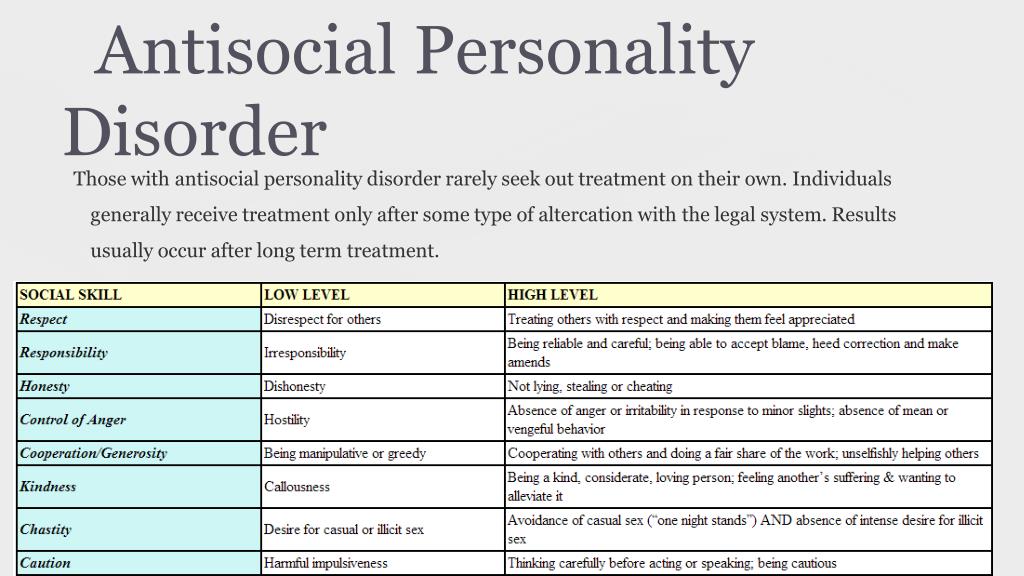 Only 169 knowncases of its manifestation: 55.6% of "alis" were men, the average age of patients was 15.5 years. According to the results of some studies, up to 6% of people experience certain symptoms of this syndrome - micropsia and macropsia - during their lifetime.
Only 169 knowncases of its manifestation: 55.6% of "alis" were men, the average age of patients was 15.5 years. According to the results of some studies, up to 6% of people experience certain symptoms of this syndrome - micropsia and macropsia - during their lifetime.
40% of patients had one symptom of the disorder, 33% had 2, 10% had 3, and 17% had 4. It is also known that the presence of one symptom lowers the threshold for the occurrence of another.
Autosarcophagy
Autosarcophagy is a severe and dangerous disorder characterized by an irresistible craving to eat oneself, one's own flesh.
The prevalence of autosarcophagy among humans has not been identified, but more than 3000 species of animals eat their own kind. In 2016, there were registered six cases of cannibalism on the territory of the Russian Federation.
The Syndrome in its most extreme and vivid manifestations can be enjoyed in the film "Who Wants to Survive", which is based on the story by Stephen King, written in the form of the diary of the surgeon Richard Pine Pinzetti.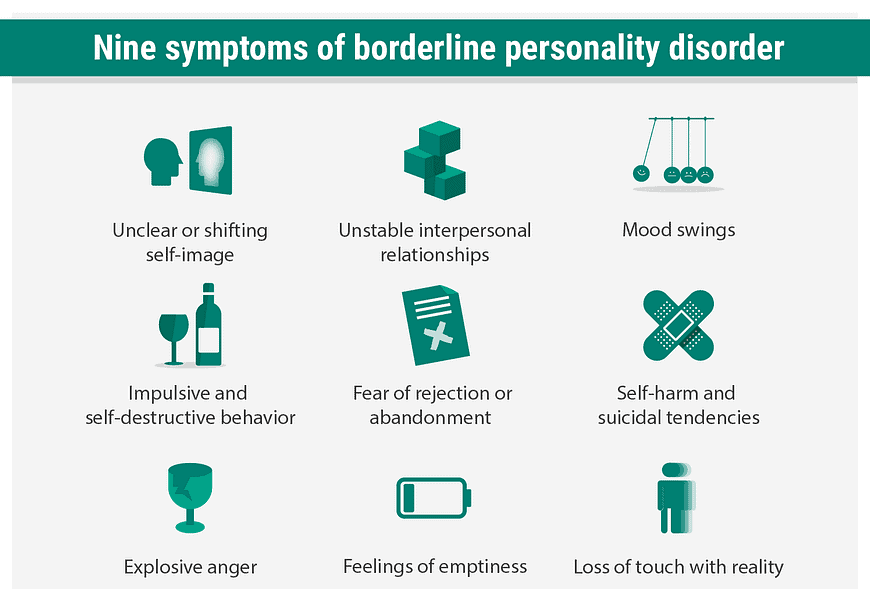 He was smuggling a large amount of heroin, but was shipwrecked and washed up on a lonely deserted island in the Pacific Ocean. The hero falls ill with gangrene and amputates his foot, using a drug as an anesthetic. Starving, Richard decides to eat his severed leg. As a result, he uses heroin and, using the skills of a surgeon, gradually cuts off various parts of his body from himself, diversifying his diet in such an extravagant way.
He was smuggling a large amount of heroin, but was shipwrecked and washed up on a lonely deserted island in the Pacific Ocean. The hero falls ill with gangrene and amputates his foot, using a drug as an anesthetic. Starving, Richard decides to eat his severed leg. As a result, he uses heroin and, using the skills of a surgeon, gradually cuts off various parts of his body from himself, diversifying his diet in such an extravagant way.
Multiple Personality Syndrome
Dissociative disorder causes a person to feel that there are multiple personalities living in their body.
People with this deviation suddenly take on the role of someone else - a mythical character, their ancestor, spirit and even an animal: one person with a dissociative disorder suddenly began to growl like a wild animal, and this was interrupted by profuse vomiting.
In most cases, the patient is unable to remember what he did when he was in a "different image".
A vivid example of the disorder can be seen in the films Sybil, The Exorcism, The Exorcist, The Six Demons of Emily Rose - many of them, according to the creators, are even "based on real events. " In each picture, the hero suddenly starts behaving extremely strangely - speaking different languages or crawling along the walls and ceiling. Usually these people are themselves mortally frightened and beg for help - relatives and friends, as a rule, invite priests who perform the exorcism.
" In each picture, the hero suddenly starts behaving extremely strangely - speaking different languages or crawling along the walls and ceiling. Usually these people are themselves mortally frightened and beg for help - relatives and friends, as a rule, invite priests who perform the exorcism.
Dissociative disorders affect 0.5 to 5% of people, with women suffering from this syndrome three times more than men.
Catatonic syndrome
Catatonic syndrome is a complex of disorders characterized by agitation or stupor. In the first case, a person moves chaotically, laughs, grimaces, repeats gestures, facial expressions, words of people around him. His behavior is usually inconsistent, speech is fast and incoherent, the patient often gives meaningless answers to questions addressed to him. So, if such a person is asked about health, he can say: “Today the weather is good, the sun, the birds ...”
In stupor, the patient seems to freeze in one position.
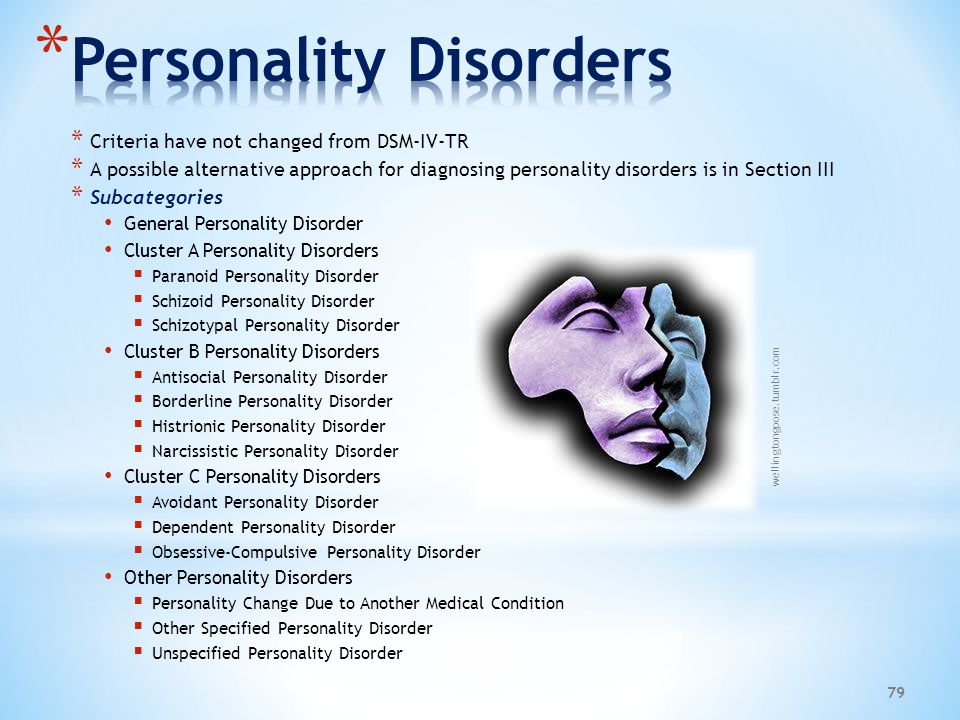 For example, when a doctor lifts his head, it does not fall back onto the pillow.
For example, when a doctor lifts his head, it does not fall back onto the pillow. A person may not respond to appeals to him, although he is conscious. If the doctor asks to perform some action, the patient performs the exact opposite. For example, the doctor says: "Please lie down on the bed," the patient sits or stands up.
The prevalence of catatonic syndrome among psychiatric patients, according to various studies, ranges from 7.6 to 38%.
Stupor is shown in the film "A Dangerous Method", which tells about the relationship between Freud, Jung and Sabine Spielrein. The heroine's mental disorder arose as a result of violence against her and manifested itself in the form of immobility. Successful psychoanalyst Carl Jung cured Sabina, suffering from hysteria, with a good spanking.
Hebephrenic syndrome
Hebephrenic syndrome is characterized by foolishness, causeless laughter, childishness, infantilism, inappropriate in a particular setting.










